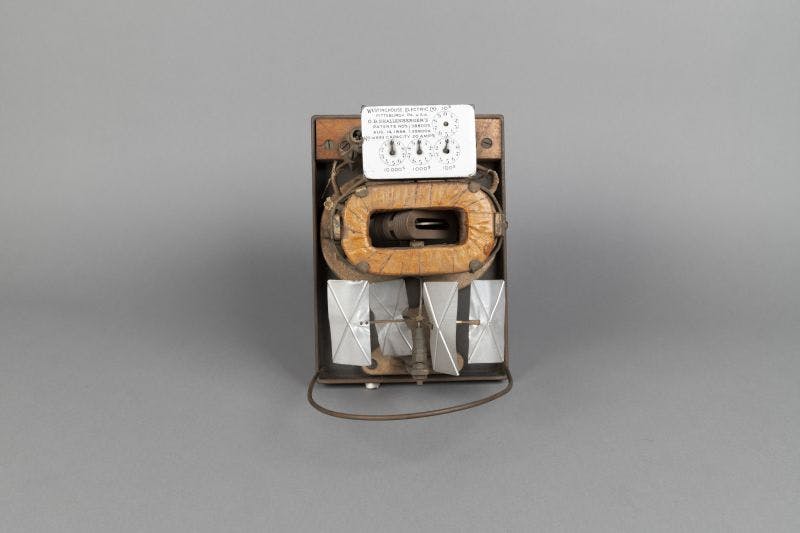
Thomson, Elihu
Inventor

This wattmeter consists of a small electric motor controlling a rotatable aluminum vane. A white metal plaque on top has a series of four counters (for the 10s, 100s, 1,000s, and 10,000s) that measures the rotation of the vane, and thus the power supplied through the meter.
In the late 1880s, Elihu Thomson, who would later serve as MIT’s acting president from 1921-1923, developed a meter that measured both alternating and direct current. The meter consisted of a small motor that was calibrated so that the speed of rotation of the armature (the coils of copper wire in the rotor) was proportional to the amount of power supplied through it. The number of revolutions were counted on the series of four metal counters on the top of the instrument, and that measured the total usage in watts.
Though he was not the first to develop a wattmeter (Thomas Edison developed one in the 1870s), his was the most accurate and efficient one. This invention revolutionized the nascent electric industry because for the first time, they could accurately track (and bill for) electrical consumption. The Thomson meter was the basis of all wattmeters used by power companies around the world for the next century. This meter was manufactured by the Westinghouse Electric Company.
Serial number 14883

Inventor

Artist/creator

GCP-00025779